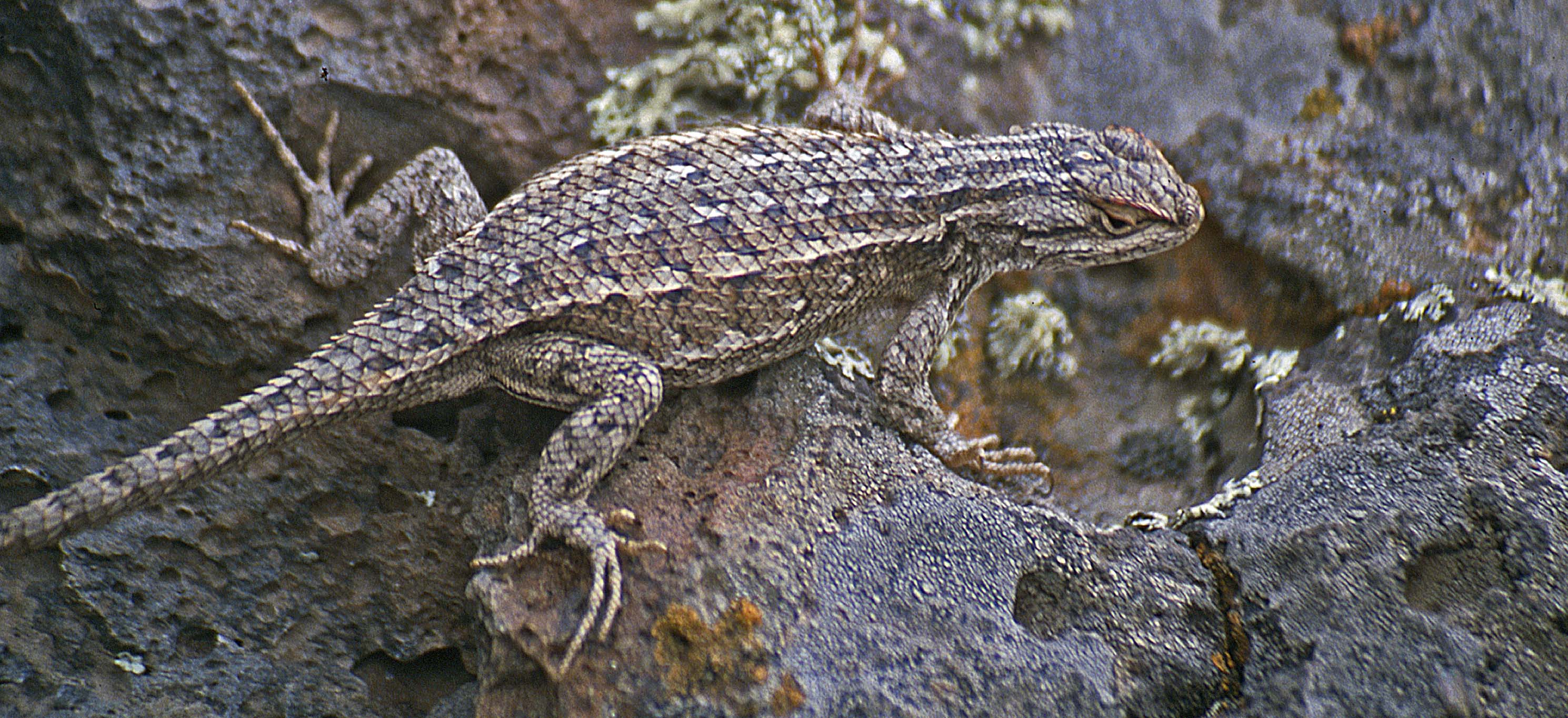There are three anecdotal records for the Western Fence Lizard in the Oliver region. A student of mine said he had caught one, kept it for a summer and released it where it was found – also in Oliver. These lizards are easy to identify – males have bright blue bands along their bellies and a blue blotch on the throat. Their back scales each have a small spine, and males displaying to defend territory will flatten their sides and do push-ups. None of the existing native lizards in British Columbia does pushups. The only other lizard in this province with blue colouration is the Western Skink – young ones have a bright blue tail.
A fence lizard I photographed in Arizona in 2000. It may be a gravid female and certainly was fixared on basking rather than running away. I got my old camera (a Nikon FM) within a meter of this lizard. I had to sharpen this image in Photoshop to make it a bit better. The Nikon FM was a “no-frills” camera and so I snapped some fast shots and in my rush, did not get the focus as crisp as it should have been.
Western Fence Lizards do really well along fences, backyards, and orchards where there is plenty of cover from predators and ample basking sites. They produce live young and so females are very intent on basking in summer to get their babies growing as quickly as possible.
If you find one, catch it – I’ll need a specimen for the museum collection. Take photos of the location where you found it, and write down the date, time, where it was caught, and any other information you think is important – even the weather and air temperature. Finding this lizard in British Columbia would be a first not only for the province, but also for Canada. It is worth writing a research paper about the discovery. You find the lizard, and I’ll do the writing, with you as a co-author.



